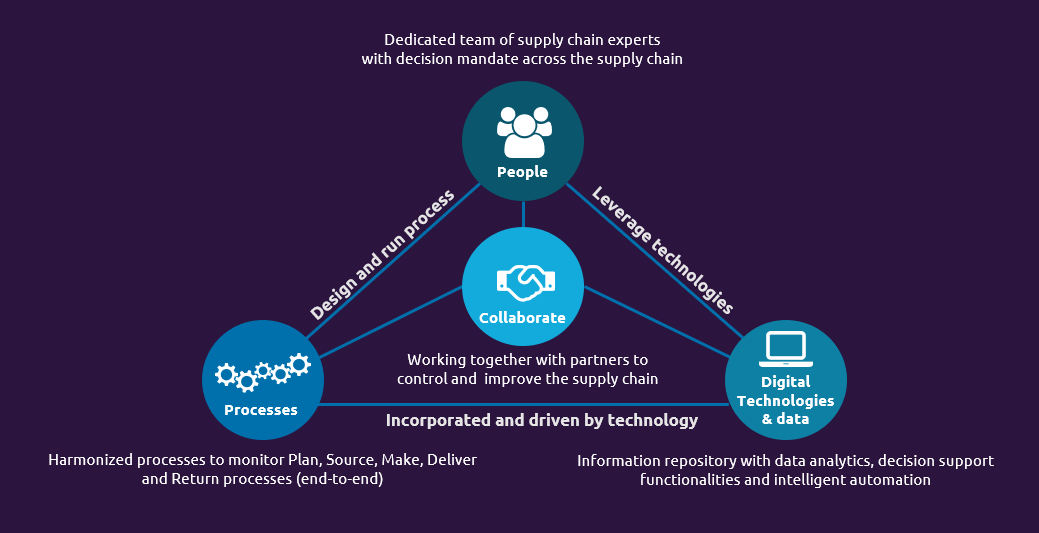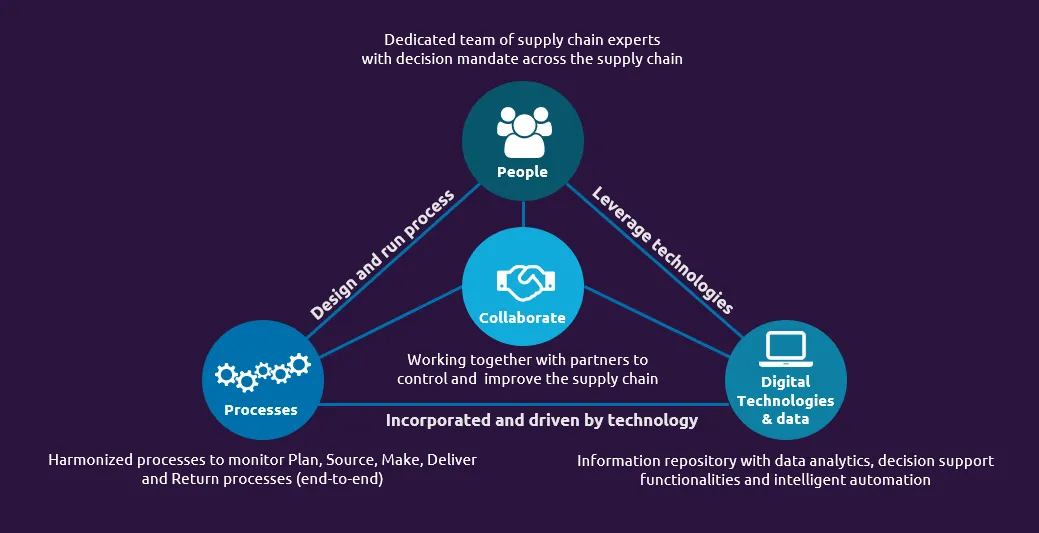What are next generation control towers?
Blog: Capgemini CTO Blog
The supply chain control tower has been around for more than ten years. However, different people and companies have very different interpretations of what a control tower is and what it does. Perhaps this is the result of the many software solutions that have control tower in the name, or because people want to use a term that they hear more and more often. In 2011, we defined the control tower as “cross-divisional organizations with system integrated information hubs that provide supply chain visibility. These hubs are used for gathering and distributing information, and allow people trained to use visibility to detect and act on risks or opportunities more quickly. They combine organizations (people), systems, and processes in order to provide supply chain partners with a high level of product visibility along the entire supply chain.”
In the past years, we have seen the control tower evolve beyond the initial definition in terms of scope, capability, and collaboration. For this reason, it is time for us to redefine the control tower. The scope has evolved from controlling and improving one part of the supply chain (e.g., outbound logistics) towards end-to-end orchestration. However, most companies tend to have one control tower per supply chain domain, without connecting them to create end-to-end visibility. In terms of capability both analytics and automation have opened a wealth of possibilities to better steer the supply chain at lower cost. For instance, a large manufacturing company shows recommended solutions to control tower operators based on prescriptive analytics, whereas previously every case was evaluated manually. This resulted in an efficiency increase of 20% and higher employee satisfaction as employees can focus is on solving complex issues instead of repetitive actions. Lastly, we see that control tower teams need to collaborate more and more with other internal teams and external partners in an increasingly complex ecosystem of suppliers, third-party manufacturers, and customers.
Based on these developments, it’s clear that we need to redefine what the control tower is. We now define the control tower as: a capability that creates visibility to monitor, control, and improve the end-to-end value chain. This requires four components: people, processes, digital technologies & data, and collaboration – which are explained in more detail below:
- People: a dedicated team of highly skilled supply chain specialists that have decision mandate and are trusted to make the best decisions for the organization
- Processes: harmonized processes across Plan, Source, Make, Deliver and Return. These are fundamental for the control tower team to understand what is going on each part of the supply chain and to take the correct mitigation action. On top of these harmonized processes, an orchestration process is required to implement the mitigation actions across the value chain when the impact exceeds the team’s decision mandate.
- Digital technologies & data: this consists of four steps. First internal and external data are collected for each of the processes in scope of the control tower. Secondly, the relevant data is aggregated in a data lake. A control tower IT system then retrieves the data from the repository and transforms it to information including visual representation. And as a last step, analytics, decision support, and intelligent automation tools support control tower operators to take the best decisions in an efficient manner.
- Collaboration: working together with internal and external partners to control and improve the value chain. Effective collaboration requires effective communication skills of control tower operators as well as a strong governance model to align the different objectives across the organization.

Figure 1: The four elements of a control tower.
So, what’s next? control towers will evolve in two directions in the next few years. Companies will truly implement end-to-end visibility by combining their “siloed” control towers into one control tower that manages their end-to-end supply chain. This will be enabled by cognitive technologies such as analytics, decision support and intelligent automation. And secondly, control towers will advance towards managing entire supply or value networks. This would mitigate many of the data and system issues that companies are currently facing, increase collaboration as partners have visibility into the entire value network and result in lower costs due to standardized solution. However, there are challenges such as the governance of the value network. And how do we ensure adherence to competition law if multiple players are on the same network?
How do you think the control tower has evolved in the past years? And what do you think the future holds? We would love to hear from you via LinkedIn.
This blog was written together with Camiel Rijlaarsdam who can be contacted on LinkedIn.
